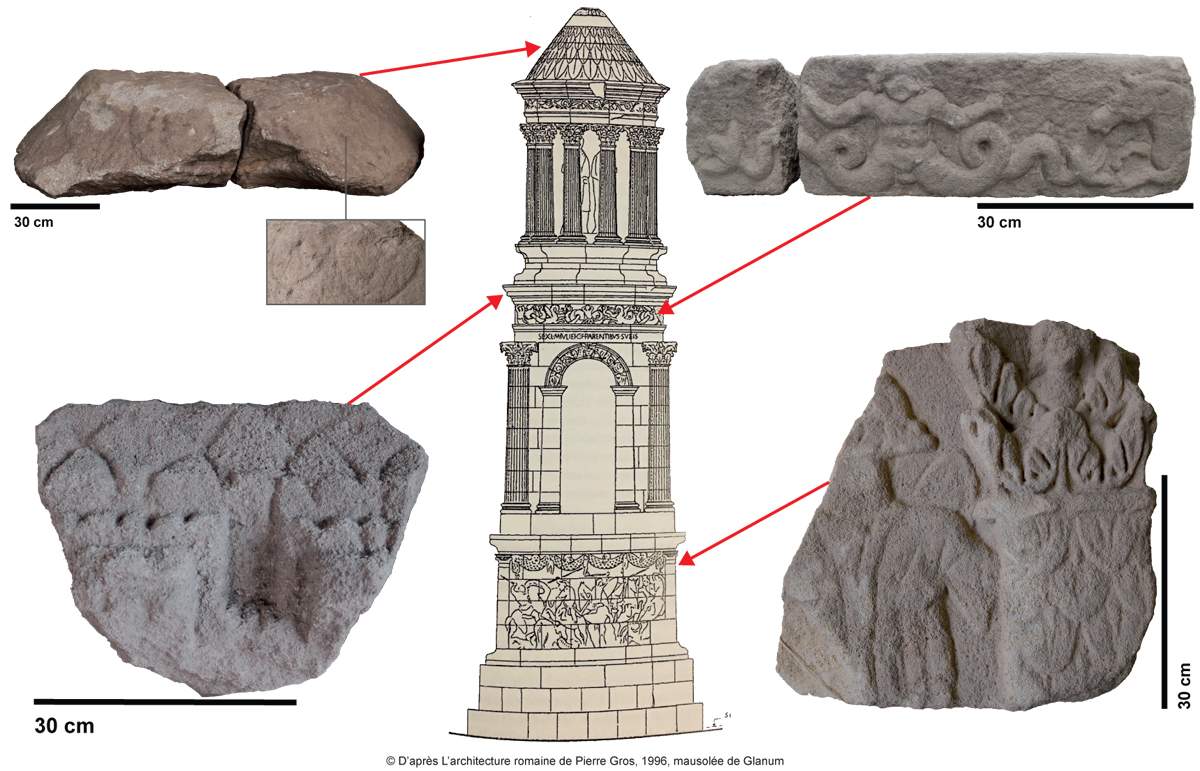France, remains of a 1st-2nd century AD mausoleum discovered in Auvergne.
Important archaeological discovery in theAuvergne region of France: at the site of Chemin des Buis, southeast of the ancient Roman city of Aquae Nerii, theInstitut Nationalde Recherches Archéologiques Préventives (INRAP - National Institute of Preventive Archaeological Research) discovered the remains of what was probably a mausoleum.
The excavation had already led to the discovery of several remains of Roman-era buildings, but what caught the attention of the archaeologists was an architectural element that proved remarkable for its shape as soon as it was discovered in the field: broken into two pieces, this element has a conical shape 140 centimeters in diameter by 30 centimeters in height, and its surface is covered with finely carved scales measuring 20 by 26 centimeters. The back of the block has a frame in anatirosis (partial polishing of the joint face so as to limit the surface area in contact with the adjoining block) indicating that it was intended to accommodate its twin on the back so as to form a circular whole. This block, INRAP archaeologists point out, is typical of conical spire mausoleums of the ancient period. A similar construction is the Mausoleum of Glanum, located in the ancient city of Glanum from which it takes its name, near the present-day town of Saint-Rémy-de-Provence.
These three elements are complemented by other architectural fragments such as a fragment of a modillioned cornice, the style and dimensions of which would fit into an architectural ensemble interpreted precisely as a mausoleum. In fact, the association of the conical cusped roof with scales and the depiction of a sea monster in the frieze allows us to arrive at this interpretation according to INRAP. Moreover, the sea monster is a motif often depicted on mausoleums in the 1st and 2nd centuries CE because it symbolizes the journey to bliss after death. These elements can be compared to other structures identified as mausoleums in Auvergne, particularly at Aulnat on the Grande-Borne site and at Mont-Dore where blocks represent a triton, and invite parallels with known Limousin sites. In-depth study of the decorations on the lapidary body will allow these initial hypotheses to be confirmed or not.
The discovery, according to archaeologists, opens a new window on the occupation of this peripheral and little-known sector of the ancient Aquae Nerii agglomeration. The old discoveries associated with the two diagnoses made in neighboring lots in 2010 and this new excavation show that in fact that the plateau southeast of the city was densely occupied during the High Empire, perhaps by a funerary monument whose context remains to be understood and which, INRAP concludes, would represent an unprecedented discovery in Auvergne.
Pictured are the architectural fragments found and a graphic elaboration of the Glanum mausoleum, which the one subject of the discovery may have resembled.
 |
| France, remains of a 1st-2nd century AD mausoleum discovered in Auvergne. |
Warning: the translation into English of the original Italian article was created using automatic tools. We undertake to review all articles, but we do not guarantee the total absence of inaccuracies in the translation due to the program. You can find the original by clicking on the ITA button. If you find any mistake,please contact us.




























